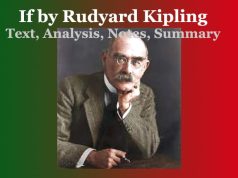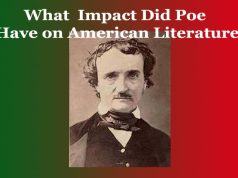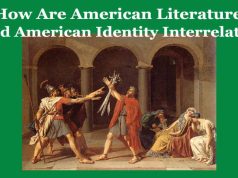Toru Dutt’s Poetry-Chief Features
Toru Dutt’s Poetry-Chief Features
Toru Dutt’s Poetry-Chief Features
Introduction:
Toru Dutt, was an extraordinary poet born in 1856 in Bengal, India, and is celebrated for her profound contributions to literature. She was one of the first Indian poets to write in English and French, showcasing her remarkable linguistic talents and cultural depth. Dutt’s poetry is a beautiful amalgamation of her Indian heritage, her fluency in multiple languages, and her keen observation of nature and human emotions. Through her verses, she captured the essence of Indian culture, history, mythology, and the subtleties of life, all while infusing them with rich sensory imagery and emotional depth. In this essay, an attempt has been made to bring out the chief characteristics of her poetry as follows:
Exploration of Indian Themes:
Toru Dutt’s poetry beautifully encapsulates her deep connection to Indian culture and heritage. Her works often reflect a sense of longing for her homeland and a yearning to connect with her Indian roots. In “Our Casuarina Tree,” she expresses her homesickness: “Oh for the cradle songs of my own clime! / In a land of alien people, strange to me.” This longing for the familiar tunes and cultural elements of her native land is a recurring theme in her poetry. Dutt’s verses vividly evoke the essence of India, showcasing her affection and nostalgia for the land she loved.
Bilingual Versatility:
Toru Dutt’s unique ability to write poetry in both English and French set her apart as a bilingual poet. Her bilingual proficiency allowed her to infuse her works with a distinct perspective. In “Sita,” she displays her bilingual prowess by creating a poetic blend: “This is my own, my native land! / Hot gleams the tawny sand.” Her command over both languages gave her poetry a nuanced richness, enabling her to convey her sentiments in multiple linguistic dimensions.
Romanticism and Nature:
Dutt’s poetry often embraced Romantic ideals, especially in her depiction of the beauty of nature. In “The Lotus,” she weaves a poetic tapestry celebrating nature’s splendor: “But o’er the tree-tops boughs / The moist air cools my brow.” Her verses are replete with descriptions of natural landscapes, capturing the serenity and allure of the world around her.
Historical and Mythological Allusions:
The rich tapestry of Indian history and mythology frequently found its way into Dutt’s poetry. In “Lakshman,” she draws on mythological figures, weaving them into her verses: “India’s own daughter, India’s sorrow! / The nightingale of India’s twilight hour.” By intertwining historical and mythological elements, Dutt infused her poetry with the cultural ethos and timeless tales of India.
Sensory Imagery and Vivid Descriptions:
Dutt’s poetry is characterized by vivid and evocative imagery. In “The Bazaars of Hyderabad,” she paints vibrant scenes: “The lotus rears her head / From out her nest of leaves.” Her skillful use of sensory descriptions brings to life vivid colors, sounds, and images, enabling readers to immerse themselves in the worlds she portrays.
Themes of Suffering and Longing:
Throughout her works, Dutt often expressed a profound sense of longing and melancholy. In “Baugmaree,” she reflects on the impermanence of life: “The golden age is not. Nor will there be a golden age.” Her verses often resonate with themes of longing, loss, and the transient nature of existence.
Social and Cultural Commentary:
Dutt’s poetry sometimes serves as a mirror to the social and cultural dynamics of her time. In “Ancient Ballads,” she questions the passage of time: “Where are the lands that, like thy land, look back on ancient days?” Her verses offer glimpses into societal reflections and ponderings on the preservation of heritage and tradition.
Conclusion:
Toru Dutt‘s poetry remains a testament to her cultural heritage, linguistic dexterity, and emotional depth. Through her verses, she not only expressed her sentiments but also offered a gateway into the rich carpet of Indian culture, history, and the human experience. 0 0 0. Toru Dutt’s Poetry
Toru Dutt’s Poetry-Chief Features
You May Like:
- Aga Shahid Ali-Postcard From Kashmir-An Analysis
- Al-Hutayah-His Life and Poetic Career
- John Donne’s Poetry-Chief Characteristics
- Birth & Development of Arabic Poetry
- Chief Characteristics of Modern English
- Birth & Development of Arabic Prose
- Chief Characteristics of Old English
- Medieval Romance-Chief Characteristics
- The Mahabharata by Vyasa-Review
- Kamala Das-A Losing Battle-An Analytical Study
- John Dryden’s Mac Flecknoe as a Mock Heroic Poem
- Henry Derozio’s To the Pupils of Hindu College-Analysis
- Robert Souithey’s The Scholar-Analysis
- H Deroio’s Song of Hindustanee Minstrel-Analysis
- Derozio’s Chorus of Brahmins-Analysis







